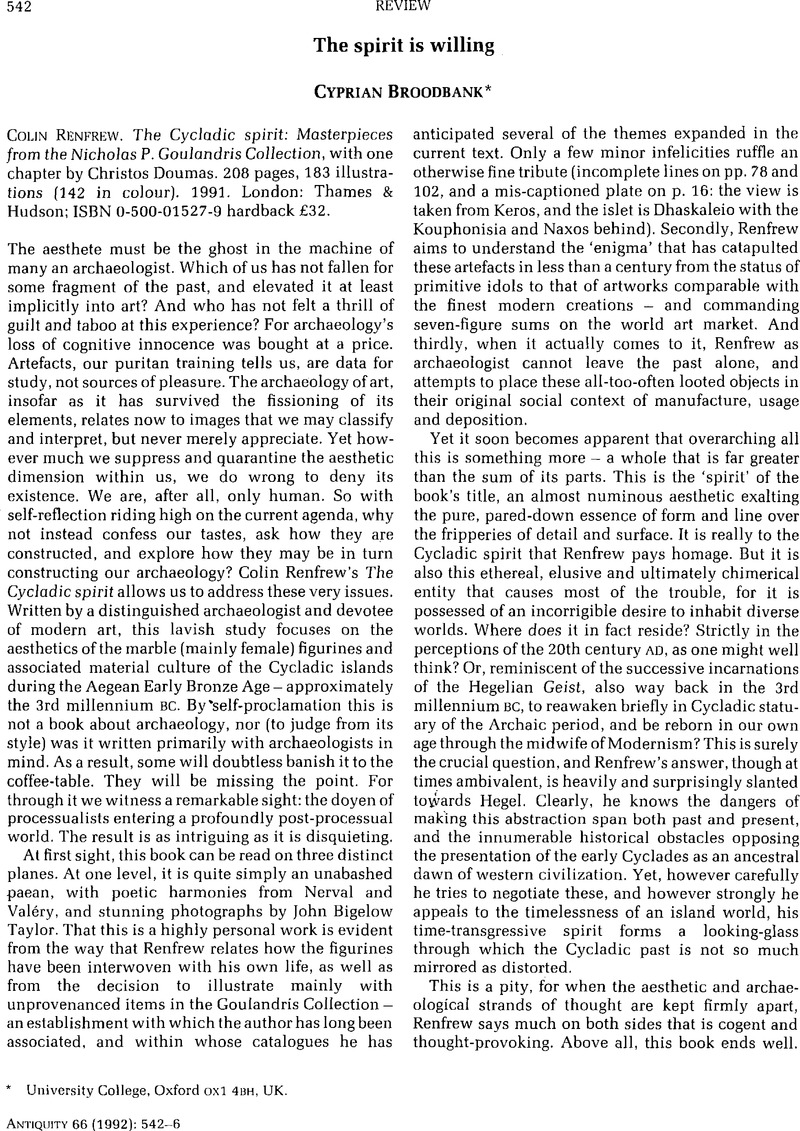Crossref Citations
This article has been cited by the following publications. This list is generated based on data provided by Crossref.
Morris, Christine
1993.
Hands Up for the Individual! The Role of Attribution Studies in Aegean Prehistory.
Cambridge Archaeological Journal,
Vol. 3,
Issue. 1,
p.
41.
Isler-Kerényi, Cornelia
1994.
Are collectors the real looters?.
Antiquity,
Vol. 68,
Issue. 259,
p.
350.
Hoffman, Gail L.
2002.
Painted Ladies: Early Cycladic II Mourning Figures?.
American Journal of Archaeology,
Vol. 106,
Issue. 4,
p.
525.
Skeates, Robin
2005.
The Archaeology of Mediterranean Prehistory.
p.
303.
Carter, Tristan
2007.
The Theatrics of Technology: Consuming Obsidian in the Early Cycladic Burial Arena.
Archaeological Papers of the American Anthropological Association,
Vol. 17,
Issue. 1,
p.
88.
Galanakis, Yannis
2013.
Early Prehistoric Research on Amorgos and the Beginnings of Cycladic Archaeology.
American Journal of Archaeology,
Vol. 117,
Issue. 2,
p.
181.
Prevedorou, E.
and
Stojanowski, C. M.
2017.
Biological Kinship, Postmarital Residence and the Emergence of Cemetery Formalisation at Prehistoric Marathon.
International Journal of Osteoarchaeology,
Vol. 27,
Issue. 4,
p.
580.
Ben-Yehoyada, Naor
2018.
Critically Mediterranean.
p.
217.



